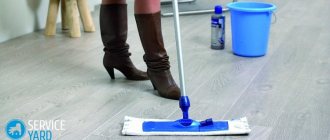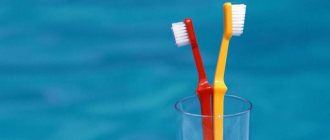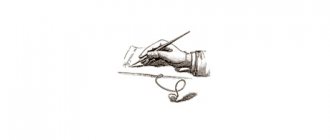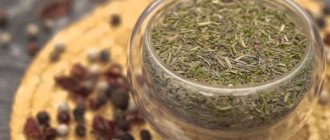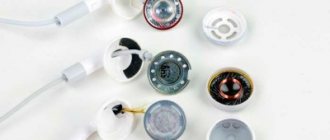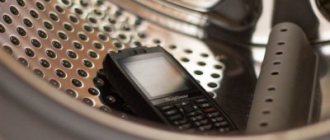Causes of squeaking and ways to determine them
There are a dozen reasons why shoes squeak when walking. The most common are the following:
- Manufacturing defect. New shoes can squeak for various reasons: poor quality material, inappropriate thread thickness when sewing, due to cutting errors. For example, if the parts are smaller than required, their excessive tension can cause squeaking.
- Sand, small debris caught between the upper and sole parts.
- Insufficient fixation of the insole or cut elements. The defect may appear during the manufacture of shoes or during wear. A moving, sliding lining will make a grinding sound during a step, and loose sides or toes will creak due to friction.
- Damage to the instep support, a thin curved metal plate designed to attach the heel to the sole. When it breaks or becomes loose, a squeak often appears.
- Poorly nailed heel. It can squeak due to an air gap at the junction with the heel or sand and pebbles getting there.
- Humidity. Leather soaked in moisture swells, seams, cut details, and soles become tight and begin to creak due to increased friction.
- Material defects. These may be defects that are invisible to the eye, but appear over time. Insufficient or excessive hygroscopicity, elasticity, poor heat resistance, cracking.
- Inadequate shoe care. For example, drying a wet pair near heating appliances, which can lead to drying out of the material, or frequent wear, which does not allow boots or shoes to dry.
To understand why new boots or boots squeak, what part is letting you down, it’s best to put on a pair and take a few steps. Any part of the upper can make unpleasant sounds - the toe, vamp, boots, heel; bottom - heel and sole; inner - insole. The sole will give itself away if the sound appears only when it comes into contact with the floor surface. Top - on the bend or movement of the foot to the side. Lining - when sliding the foot inside. To clarify the location of the source of the squeak, you need to sequentially bend the shoes from toe to heel.
To avoid buying low-quality shoes, it is important to try them on. This is how comfort and the presence of hidden defects such as squeaking are determined. If the model you like immediately creaks, this is a manufacturing defect, it is better to refuse the purchase.
It is worth knowing what to do if your shoes squeak and the warranty period has expired, or there is no way to return them to the store. You can deal with some problems on your own. For example, replace the insole, get rid of excess moisture, or vice versa, moisten the material. In difficult cases, you will need to contact a specialist. The specialist will help with the formation of cracks in the sole, problems with heels and instep supports.
Manufacturing defect
Poorly nailed heel
Insufficient fixation of the insole or cut elements
Damage to the instep support
Interior
To remove a squeak that occurs from the inside, it is important to determine the reason for it:
- When an unpleasant sound is caused by insufficient fixation of the insole or heel, it is necessary to eliminate the problem and the unpleasant sound will disappear. You can do this yourself or seek help from a professional shoemaker.
- Creaking from wet shoes can be easily eliminated by thorough drying. There is no need to do this near heating appliances. The material will dry out, the service life of the shoes will decrease, and after some time, cracks will appear on the surface of the leather or varnish, and the sole will begin to crumble.
- If the squeaking of the inside of your boots is caused by wearing them barefoot, wear socks. When this is impossible to do, for example, you wear sandals or sandals, treat your feet with special antiperspirants and talcum powder that eliminate sweating.
How to get rid of unpleasant sound
Material saturated with moisture begins to creak when walking due to friction. In this case, you should think about how to get rid of squeaking shoes without harming the product. It is not advisable to use aggressive drying methods near a fire or heating device. If you don’t have time to wait for the steam to dry at room temperature, use a hair dryer at medium speed.
If shoes squeak due to the opposite phenomenon - overdrying, then the material must be softened. It is moisturized with water, oils, and professional products. Procedures must be carried out with care so as not to spoil the color or structure.
You can use a hair dryer at low speed to dry shoes.
Moisturizers for shoes
You need to take care of your shoes with care so as not to spoil the color and structure of the material.
Top
If your shoes squeak when you walk in the upper part, the leather parts of the boots or shoes should be lubricated with a mixture of wax and goose fat in a ratio of 1:3. To do this, heat the products in a water bath, mix, and apply to the surface with a cloth. The method is only suitable for products made from natural smooth leather. The color may darken by 1-2 tones.
The creaking of shoes with a textile or artificial leather upper is removed by wrapping them with a damp cloth. To do this, prepare a solution of water, shampoo or vinegar (1-2 tablespoons per liter), moisten two flannel or cotton napkins, wring them out a little and wrap the left and right shoes separately. After this, you will need to leave the couple alone for 6-8 hours.
If leather shoes, including patent leather ones, squeak, then they are treated from the inside with oil-containing substances - castor oil, coconut oil, Vaseline, and then left for 6-8 hours. When using drying oil, the period increases to a day, after which the excess product is removed with a napkin.
Patent leather shoes are more demanding and are more susceptible to cracks and stains. It makes sense to purchase a professional polish care product. One of the best is the Collonil Lack Mousse foam. After application, spread it over the surface, polishing the skin with a soft cloth.
For suede, nubuck, velor, crocodile or snakeskin, these methods are contraindicated.
For expensive materials, it is recommended to purchase electric shoe dryers that heat the product from the inside (or wooden cedar dryers) and special care products that do not damage the surface and structure of the shoes or boots. For fleecy shoes, you should use impregnation with fluorocarbon resins, for example, Salamander Universal SMS. It acts as a softener and also prevents the appearance of stains from water, salt, and snow.
If the insole is to blame for the squeaking, it must be removed and the area adjacent to the sole treated with talcum powder, dry antiperspirant or soap. They will absorb excess moisture and fix the lining. If these products are not at hand, you need to put a dry paper napkin under the insole.
Lubricate the top of the boot with a mixture of wax and goose fat.
Products made of textiles and eco-leather should be wrapped in a damp cloth
Natural and patent leather are treated internally with oil-containing substances
Collonil Lack Mousse foam for patent leather care
Electric shoe dryers
Salamander Universal SMS
Treat the insole with talcum powder
Sole and heel
To stop the heel from creaking, it is lubricated with vegetable oils or rendered lard at the junction with the sole. They do the same if there are problems with the heel. What they do when the sole squeaks when walking, if it is too dry, is to moisturize it. The napkin soaked in the prepared solution is not wrung out, but folded 3-4 times, placed under the shoes and left in this position for 6-8 hours. You can eliminate the creaking of the sole with oils or drying oil. To do this, remove the insole, heat the outsole a little, knead it with your hands and lubricate it on both sides with the prepared product. Then leave until completely absorbed, exposure time ranges from 8 to 24 hours.
Lubricate the heel with oil
Remove the insole, warm the outsole, knead, grease both sides with oil and leave for a day
The choice of products depending on the type of shoes
What do you do if your shoes squeak when you walk and wet wraps don’t help? You should use WD-40 aerosol. Its main active ingredients are white spirit, carbon dioxide and mineral oil. The composition lingers on the surface for a long time, providing lubrication that reduces friction. Apply it to a cotton or fabric swab, after which the drug is carefully distributed over the surface.
When sneakers or sneakers squeak, it may be caused by overtightened lacing. In this case, it should simply be weakened. If the sole makes an unpleasant sound, then most likely microcracks or voids formed in it are to blame. You can eliminate the squeaking of sports shoes by filling the damaged areas with colorless silicone or polyurethane glue.
If your boots or boots squeak and you don’t have any means at hand to soften the material, you can use a hammer wrapped in a cloth. They are used to carefully cut off the tops, boots, toes, and heels. In this case, it is better to put a last, crumpled newspaper, and napkins inside the shoes to avoid deformation of the parts.
When the rubber sole of a demi-season shoe squeaks, it is “treated” by heating and then kneading along its entire length. Rubber expands at high temperatures, becoming more elastic and flexible.
If your boots squeak when you walk, what professionals do is use store-bought products . There are many special formulations that can soften the skin, for example, silicone spray. It is easily and quickly absorbed into shoes without leaving marks, fills cracks, and prevents friction. At the same time, it is as safe as possible. The only precaution is not to use indoors or near fire.
Aerosol WD-40
Loosen the lacing
Glue the sole with polyurethane glue
Place a shoe last or newspaper inside the shoe and carefully hit the problem areas with a hammer
Rubber boots need to be warmed up and then worn in.
Silicone spray
Repairing Damage
If your shoes squeak when you walk, inspect them carefully - there may be cracks in the soles. An annoying sound sometimes occurs when the lower part of a shoe or sneaker begins to come off. To eliminate squeaking, use special shoe glue. When working with it, it is important to follow the instructions and be careful. It is necessary to glue only after thoroughly drying and degreasing the surfaces. After finishing work, leave the sneakers and boots for 24 hours until completely dry.
Preventive measures
Having figured out why shoes squeak when walking, it would also be useful to find out how to protect them from this problem. Contamination from dust, sand, soil, damage from asphalt, stones, the negative impact of temperature changes - all these circumstances have a detrimental effect on quality. The material is not spared by weather conditions - rain, snow, wind. All this leads to a deterioration in the appearance of the boots and the appearance of squeaking. In order for a pair to last longer, it should be properly cared for:
- Treat with water and dirt-repellent agents, household or professional, at least once a month.
- Use products to soften and protect the skin daily - creams, ointments.
- If the shoes are wet, let them dry for 24 hours at room temperature, without the risk of under-drying or over-drying. Wet and overdried material are equally prone to squeaking.
- When putting on, use a shoehorn to prevent the heel from creasing. You shouldn't step on it. Being deformed, it fixes the heel worse. At the same time, the heel begins to loosen and creak.
- Determine a closed space for storage, away from direct sunlight and heating devices, with low humidity. It is advisable to insert pads into the product to prevent deformation.
Finding good shoes is not easy. Therefore, if shoes or any other model begins to creak, you should not rush to buy a new product. It makes sense to try to get rid of the squeak using household or store-bought products. In difficult cases, with problems with the sole and heel, it is better to contact a specialist - this way you can painlessly extend the life of your favorite shoes, sneakers or boots.
Treat with water and dirt-repellent agents
Use ointments and shoe creams daily
Dry shoes correctly, without the threat of drying out
When putting on, use a shoehorn
Store shoes in a dark place with a last or newspaper inside to avoid deformation


